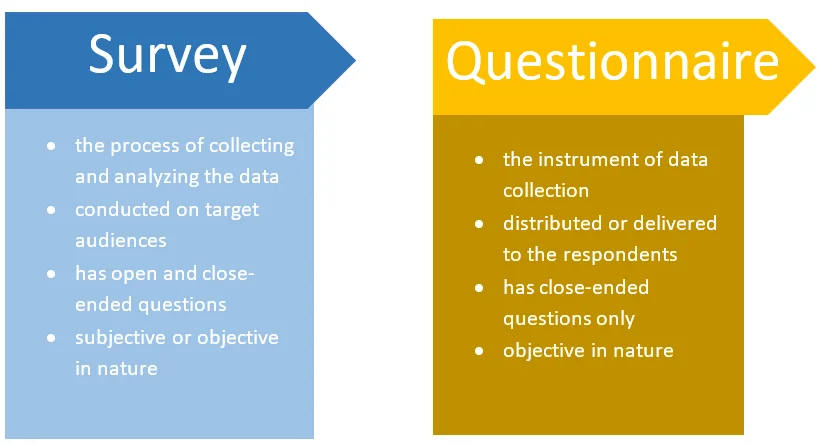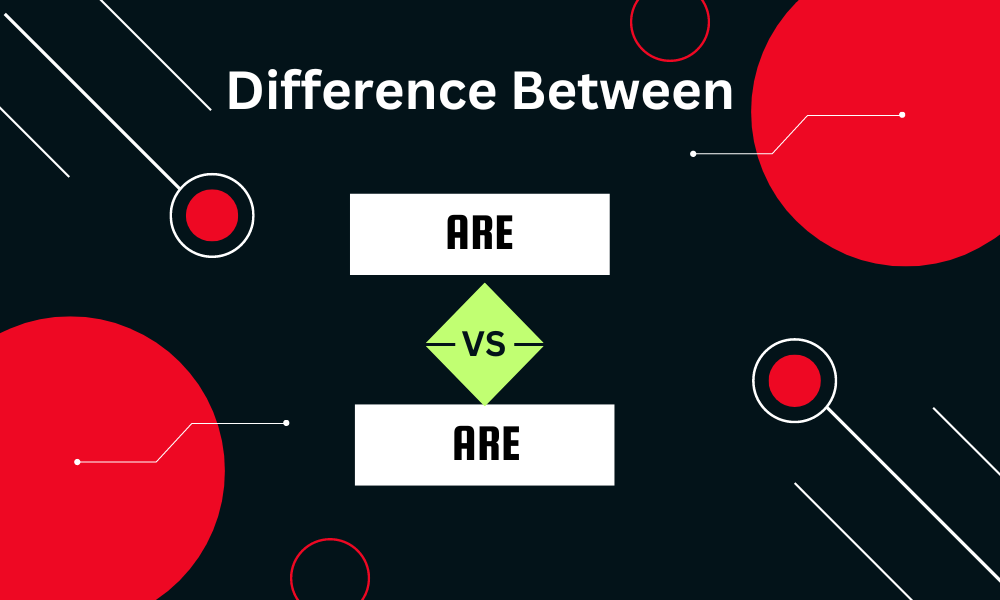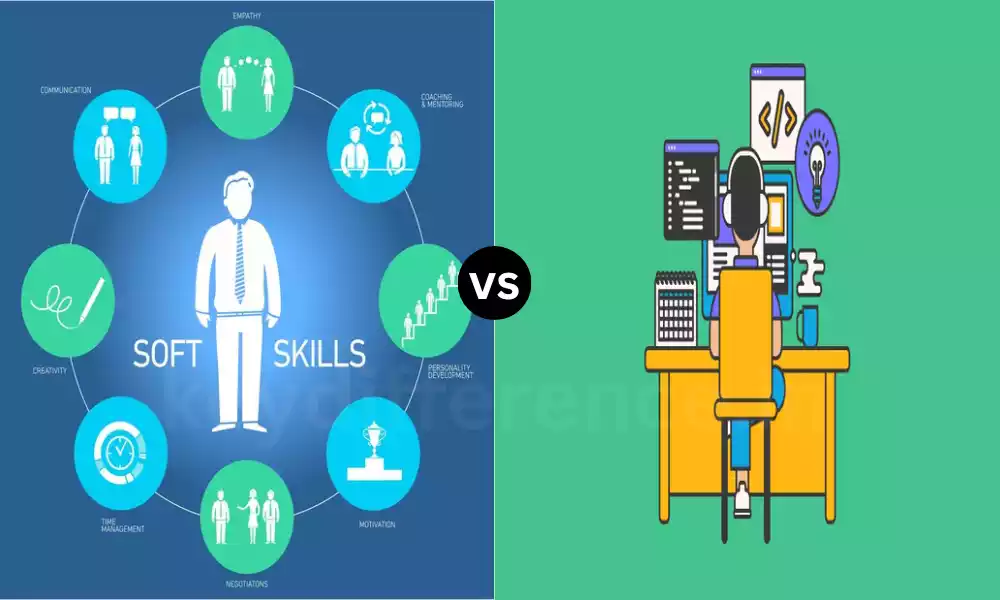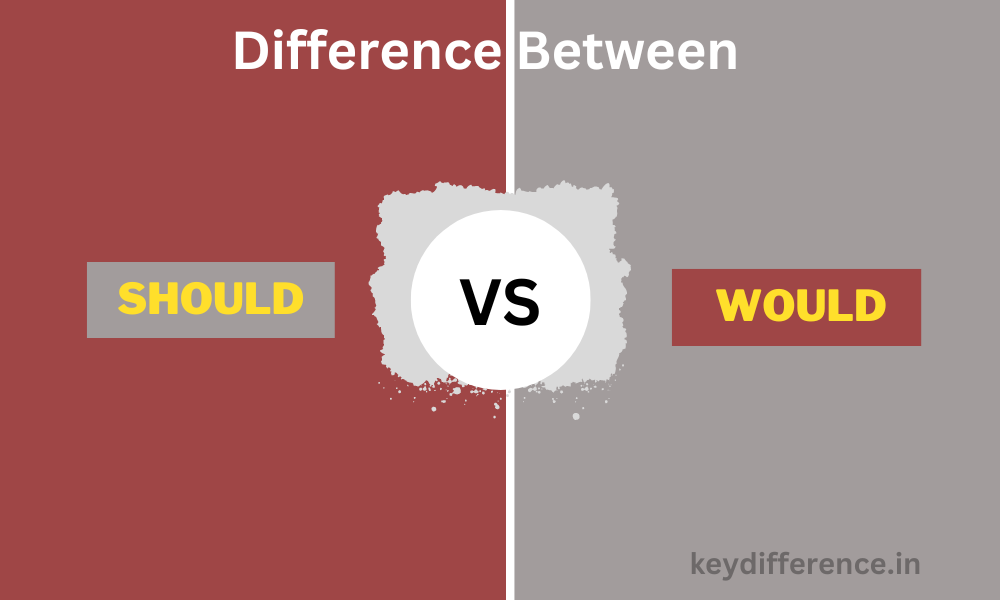Definition of Questionnaire
Questionnaires are tools of research designed to obtain specific data from respondents by asking an array of structured or semistructured questions designed to elicit their answers. Questionnaires are used as an effective research method in fields including social sciences, psychology, market research and customer feedback.
Questionnaires may be implemented either via paper forms or online surveys for optimal use. Interviewed participants should also be subject to screening procedures if desired by research objectives and target population.
Questions in surveys may either be open-ended – providing respondents the freedom to provide more in-depth responses – or closed-ended, with predefined response options presented as choices for respondents to select from. A questionnaire’s purpose is to collect quantitative or qualitative information that can then be analyzed to make decisions, identify patterns or draw conclusions.
Definition of Survey
Survey is an efficient means of gathering data; it involves polling samples or populations in order to collect insights, opinions or facts on specific subjects.
Surveys can be carried out through various means, including interviews or telephone polls; online questionnaires; paper forms or paper surveys with structured statements/questions to respondents.
Users give responses based on knowledge, opinions or experiences gathered. Surveys may employ multiple-choice questions, Likert-scale or ranking surveys as well as open-ended queries depending on research objectives and desired information.
Data collected can be examined for patterns, trends or correlations to gain valuable insights that aid decision-making or research efforts. Surveys are widely utilized across fields like market research, social science research, public opinion polling and customer satisfaction evaluation.
Importance of gathering information through Questionnaires and Survey
Gathering information via Questionnaire and Survey is vitally important, for various reasons:
Data Collection: Questionnaire and Survey offer researchers a systematic and structured way of collecting information about populations or samples of interest, from demographics, opinions, attitudes and behaviors through to social demographics and behaviors.
Survey and Decision-Making Tools: Questionnaire and Survey can serve as indispensable research and decision making tools, helping researchers collect empirical data that they can examine to reveal patterns, trends, correlations or associations arising from surveys or questionnaires.
Researchers can collect this empirical information which they then utilize in conducting further analyses involving this empirical information gathered through surveys or questionnaires gathered through various platforms such as academia, business or healthcare to make evidence-based decisions across sectors like academia or healthcare.
Understanding Stakeholder Perspectives: Questionnaire and Survey provide researchers and organizations a reliable method for gathering the opinions and perspectives of individuals or groups, including students, employees or customers.
With these surveys and questionnaires they can better comprehend expectations and needs from various stakeholder populations such as students, employees or customers that will help to tailor services or products, tailor interventions as necessary or address grievances/concerns directly.
Questionnaire and Survey can be an invaluable way of gathering feedback and measuring customer satisfaction, giving organizations access to powerful data tools for measuring employee involvement, student experience and user opinions on products or services.
With such insight gained through feedback gathering processes comes potential improvements that improve quality products or services while pinpointing issues which must be dealt with effectively in the future.
Monitoring and Evaluating: Polls and questionnaires provide researchers with useful methods of tracking initiatives, programs, or interventions over time.
Researchers can collect information at various stages to measure impact, effectiveness or outcomes – that data could even inform program changes by helping pinpoint success factors or signal areas that require further consideration.
Identification of Trends and Patterns: Questionnaires and surveys can help researchers quickly recognize emerging trends, patterns, or issues through data collected from many respondents and then analyzed to gain insights into societal shifts, consumer preferences, market trends or changes in public opinion – this knowledge could then guide strategic planning efforts, policy creation or market analysis research studies.
Researchers can gather information using questionnaires and surveys designed to collect responses from specific populations or samples, using various sampling techniques that allow researchers to select participants that represent those they’re studying.
Once collected, data can then be analyzed in depth in order to draw accurate conclusions regarding its entirety.
Surveys and questionnaires can provide invaluable ways of collecting data, understanding perspectives, making evidence-based decisions, measuring satisfaction levels, monitoring progress and uncovering trends – essential elements in research, decision-making processes, program evaluation and understanding stakeholder needs.
Comparative Table of Questionnaire and Survey
This table highlights the main differences between Questionnaire and Survey:
| Aspect | Questionnaire | Survey |
| Definition | Research instrument with structured questions | Data collection methods for insights |
| Purpose | Get specific information from respondents | Gather data and insights about a specific topic |
| Administrative Method | Self-administered | Interviewer administers the test |
| Interaction with respondents | No direct contact with respondents | Direct interaction with respondents |
| Question Types | Rating scales can be open-ended or closed-ended. | Open-ended, multiple-choice, Likert-scale, etc. |
| Data Collection | Self-administered questionnaires by respondents | Interviews conducted by interviewers |
| The Analysis of the Problem | Quantitative Analysis | Analysis of quantitative and qualitative data |
| Data Generalization | Self-administration limits generalizability | Interviewer administration can be used to generalize the results of an interview. |
| Research Areas | Social sciences, market research, psychology, etc. | Market research, public opinion polling and academic research are all examples of this. |
| Sample Size | You can reach a lot of people | Sample sizes are often limited. |
| Flexibility | Respondents can complete the questionnaire at their own convenience | You can adapt your questions according to the feedback you receive from respondents |
| Response Rates | Reduced response rates | Direct interaction increases response rates |
| Cost and Time | It is generally less expensive and time-consuming. | Interviewers can make the process more expensive and time-consuming. |
| Potential Bias | Response bias and interpretation | Interviewer bias and influence |
While questionnaires are one type of Survey, the term “survey”, which is used to Describe various data Collection methods, includes Questionnaires, can be used in a Broader sense.
The main Difference is in the way that Questionnaires are Administered and how they Interact with Respondents.

Methodology
This section details the methods and procedures utilized when conducting questionnaires or surveys, so here are key points you must keep in mind when writing it:
Research Design: Outline your approach for gathering data collection (for instance longitudinal, cross-sectional or experimental designs). Explain why and how these align with your research objectives.
Population and Sample: Establish which groups or populations the study pertains to, while outlining the procedures employed for selecting samples from them and discussing sample size, inclusion/exclusion criterion criteria and stratification/randomization methods used.
Explain how your survey or questionnaire was developed. Outline all steps taken to ensure validity, reliability and accuracy – such as conducting literature reviews, pilot testing and refining it according to feedback – as part of its development process.
Questionnaire Format and Structure: Describe the format and structure of the survey or questionnaire, such as any sections or skip patterns included as well as routing instructions/skip patterns used, with explanation for why specific question types such as multiple-choice questions, Likert scale questions or open ended ones were selected (for instance multiple choice questions are considered the standard question type for surveys/questionnaires).
Data Collection Procedure: Outline the procedures you employed when collecting information from respondents, providing any instructions or guidelines they might need for collecting data.
Describe any methods for dispersing questionnaires and surveys such as emailing them out directly, mailing them directly out by post office box, hand delivering or online distribution of forms and surveys.
Discussion of Ethical Considerations: Outline all ethical considerations taken during data collection, such as seeking informed consent from participants, maintaining confidentiality and privacy and adhering to ethical standards specific to your research field.
Data Analysis: Outline the methods of data analysis utilized when reviewing collected information. Be specific with statistical techniques, qualitative methods and software used based on research objectives and nature of collected data. Discuss processes related to coding, cleaning and transforming responses prior to analysis.
Limitations: Examine any limitations or biases present in your method, such as response biases, sampling constraints or data collection techniques that limit results and the generalizability of their conclusions. Also assess their effect on validity and generalizability.
Provide information regarding any pilot testing conducted prior to conducting main data collection to assess clarity, relevancy and comprehensiveness. How has feedback from pilot testing affected your final version?
Data Validation and Quality Control: Investigate measures taken to assure data quality such as validation checks, double entry or reliability analyses. Outline strategies used to reduce missing data or manage outliers.
An insightful approach can be gained through reading a detailed section that describes the methodology. This allows them to grasp its approach, rigor and limitations as part of an interview or questionnaire survey or study.
Data Collection
Data collection is an essential step of both surveys and questionnaires, gathering responses from your sample or target population. When collecting this type of information consider these key points when performing any type of data gathering:
Distributing questionnaires: Consider which distribution method best meets your needs when disseminating surveys and questionnaires – mailing physical copies, sending electronic versions via email or through online survey platforms, or conducting in-person distribution are all valid solutions.
Instructions and communication: Make it clear how respondents should complete your survey or questionnaire, include information regarding its purpose, confidentiality requirements and any guidelines or restrictions you might impose when answering any of its questions.
Also set up effective channels so that participants may express any issues they might be experiencing or raise any inquiries they might have.
Self-Administered Data Collection: When collecting information through questionnaires, respondents fill in forms themselves. Use plain language so your questionnaires are more easily understandable by respondents and allow enough space for writing responses before providing options to return completed questionnaires.
Interviewer-Administered Data Collection: Surveys often involve direct interactions between interviewers and respondents, so interviewers must be trained in standard procedures that adhere to neutrality without inflicting influence upon responses or answering attempts from respondents. Furthermore, interviewers must know about and be capable of accurately recording answers into survey tools.
Online Surveys: When selecting an online survey platform, choose one which provides reliable service with data protection and privacy features.
Before beginning the survey itself, test it on different devices and web browsers to make sure everything runs as intended; take into consideration accessibility features for participants with disabilities; monitor response rates with reminders as necessary.
Response Rates and Nonresponse Bias: Measure the representativeness of your sample by monitoring response rates. Low response rates can lead to non-response bias that erodes generalizability; strategies like reminders, incentives or follow-up contact may help improve response rates and diminish bias.
Data Validation and Quality Control: Implement procedures to ensure data validity and quality, verify data accuracy and look out for missing or inconsistent answers, while using unique codes/identifiers to link responses with specific individuals while keeping anonymity.
Ethics: When gathering data for any study or investigation, be certain to adhere to ethical principles. Participants should be made aware of its purpose and use, while protecting both privacy and confidentiality for respondents. Also observe any ethical rules specific to your field of research.
Data Management: Take an organized and systematic approach to organizing and storing collected information. Establish protocols for data input, storage and backup so as to preserve its integrity and safety; consider de-identifying or anonymizing information when sharing or reporting findings.
Timelines and Deadlines: Establish reasonable timelines to collect data, taking into account its complexity, sample size and logistical issues. Communicate deadlines clearly to respondents while leaving ample time for data entry/validation post collection.
Researchers can collect high-quality, reliable data by carefully planning and executing their data collection phase. Once collected, this data can then be analyzed to uncover meaningful insights and reach valid conclusions.
Analysis and Interpretation
At this step of data analysis and interpretation, key points should be remembered when extracting valuable insights from surveys or questionnaires:
Prep Data for Analysis: Verify for missing values, anomalies, or inconsistencies before performing transformation and recoding as necessary to create an orderly dataset ready for analysis.
Quantitative Analysis: When conducting questionnaires or surveys that yield quantitative data, appropriate statistical techniques need to be applied in their analyses.
This may involve descriptive statistics (mean, median, standard deviation etc) descriptive statistical tests (such as Chi-Square test or regression analysis), advanced statistical methods or even combinations thereof depending upon your research objective.
Use qualitative analysis techniques when conducting questionnaires or surveys that include qualitative questions and data, in order to code responses, categorize responses by theme/pattern recognition and conduct content/thematic analyses if applicable (use qualitative software as necessary).
Use statistical software such as SPSS or STATA to conduct quantitative data analyses. These tools offer various statistical tests and functions for investigating relationships, testing hypotheses, generating summaries statistics and more.
Visualization: Utilizing effective data representation techniques such as charts, tables, graphs or diagrams helps understand patterns, trends and relationships within data. Visuals also enhance communication of findings.
Statistical Significance: To evaluate statistical significance is to ascertain both its reliability and significance for relationships or differences that have been observed, using appropriate significance tests (e.g. P-value threshold).
Interpretation: Data should be interpreted within its respective theoretical frameworks relevant to research objectives, with explanation, interpretation and meaningful insights about results provided for discussion of implications or possible applications with literature or theoretical approaches being referenced as needed.
Consider triangulating findings if multiple data sources (e.g. both survey and questionnaire data) are combined in your analyses; compare and contrast their results so as to increase validity and reliability.
Limitations: Inspect and identify any biases or limitations present in the analysis process, noting how such issues could influence validity and generalizability findings as well as any limitations or shortcomings which have affected it.
Reporting: Results should be communicated clearly and concisely in an easily understandable fashion. Create a research report which includes introduction, methodology and results sections as well as discussion and conclusions sections to convey information regarding findings as evidence to support conclusions drawn in your findings report.
Researchers can easily validate their hypotheses and add to existing knowledge by employing rigorous analysis techniques.
Choosing the Right Method
Selecting an effective data collection method – be it questionnaire, survey or another method – depends upon a variety of considerations. Consider these to help select an approach:
Clarify the research objectives you wish to meet and the information needed. Determine whether quantitative or qualitative insight are desired – your decision of method will depend on this decision.
Data Type: Consider what data type you wish to gather before choosing how best to gather it. Surveys may be effective for collecting structured, predetermined responses while questionnaires offer better structured answers while surveys allow more narrative, in-depth responses.
Sample Size and Accessibility Determine both sample size and accessibility when creating surveys for small or specific groups, since such initiatives often necessitate interaction among participants.
Resources and Logistics: Evaluate available resources such as time, budget and personnel before selecting questionnaires as cost-effective methods that save resources; self-administered questionnaires are cost-efficient yet time saving while surveys may require interviewers and take more time than self administered ones.
Response Rates: It is important to take the expected response rates of each method into consideration, with surveys often performing better when distributed online than questionnaires do.
Data Analysis Requirements Determine what level of analysis will best meet the objectives of your study. Surveys and questionnaires both make great quantitative sources.
Context and Sensitivity: Carefully consider both the context of your research as well as any sensitive nature of its subject matter when conducting surveys or questionnaires on sensitive matters or less-than-sensitive matters, respectively. While surveys can help address broader subjects more directly while questionnaires offer more tailored approaches when used for intimate or sensitive subjects.
Assess each method’s practical viability with consideration given to factors like available technology, timeframe for data collection and any ethical concerns related to each technique.
Prior Research: Examining existing literature and studies will enable you to ascertain which methods have been successfully employed when similar questions or objectives have been explored in the past.
Pilot Testing: Perform a pilot test of your selected method to ascertain its validity, reliability and feasibility. Pilot tests provide an invaluable way to detect issues early and make necessary modifications before collecting full scale data.
Decisions between surveys and questionnaires depend on many variables such as research context, objectives, resource requirements and logistics issues. When choosing the optimal methodology for your study it’s crucial that these elements are carefully taken into account.
Conclusion
Surveys and questionnaires can be invaluable tools for gathering data for research or other data-collection efforts. Although both have similar features, each has unique qualities which make them appropriate in different circumstances or purposes.
Questionnaires consist of structured questions administered directly by respondents themselves to gather specific data, while being flexible enough to include various question types such as closed-ended, open-ended and rating scale queries. Questionnaires can be customized and completed at anytime of their convenience – though their response rates, biases in responses and generalizability might limit its usefulness.
Surveys offer an expansive method for collecting information. They typically involve both questionnaires and direct interaction between interviewer and respondents to collect the desired data, providing qualitative as well as quantitative answers in both structured and unstructured form – potentially increasing response rates by personal interaction between interviewer and respondents.







